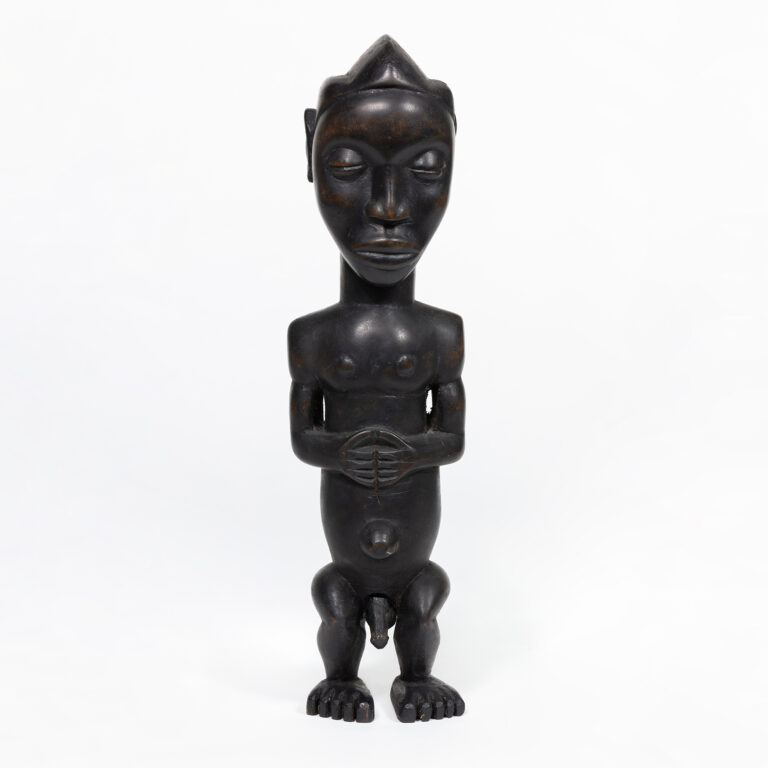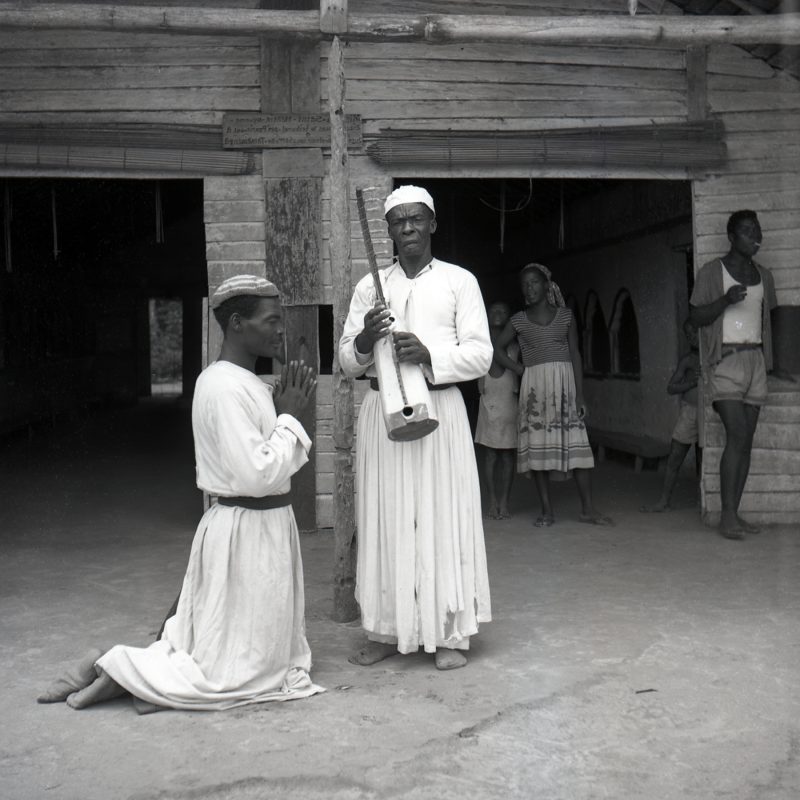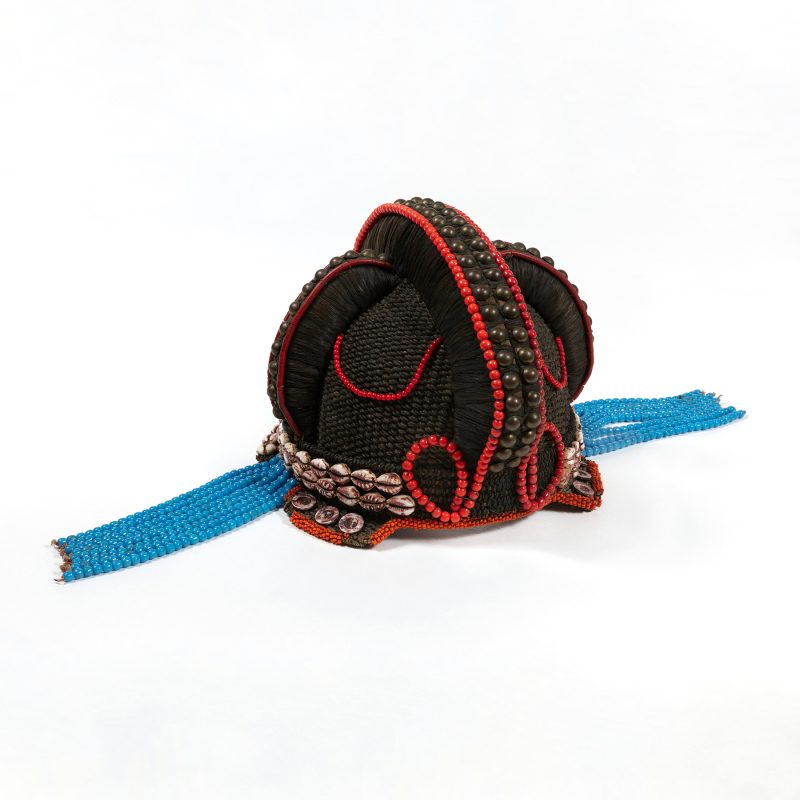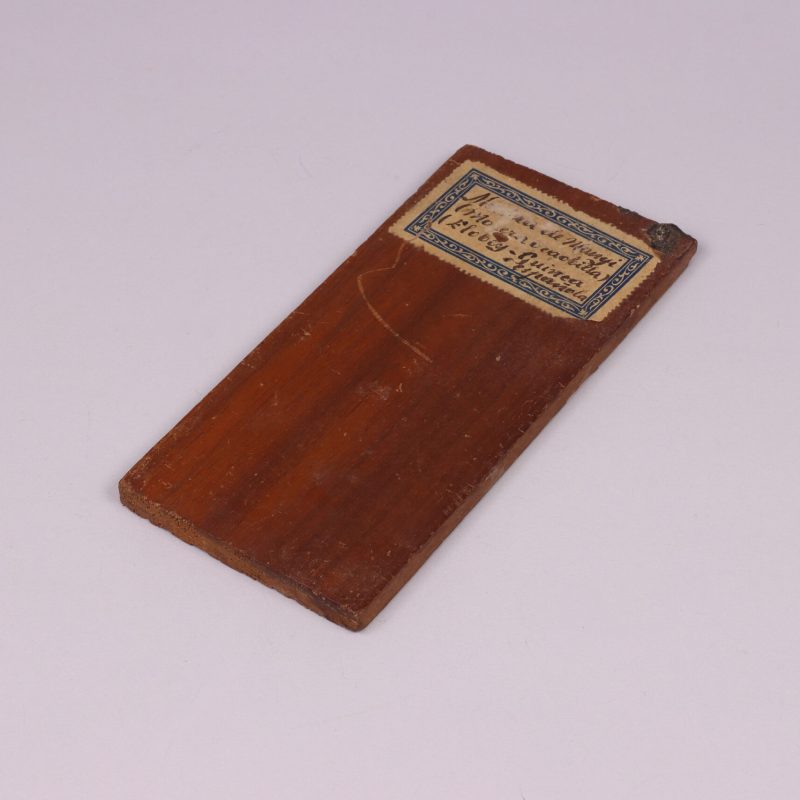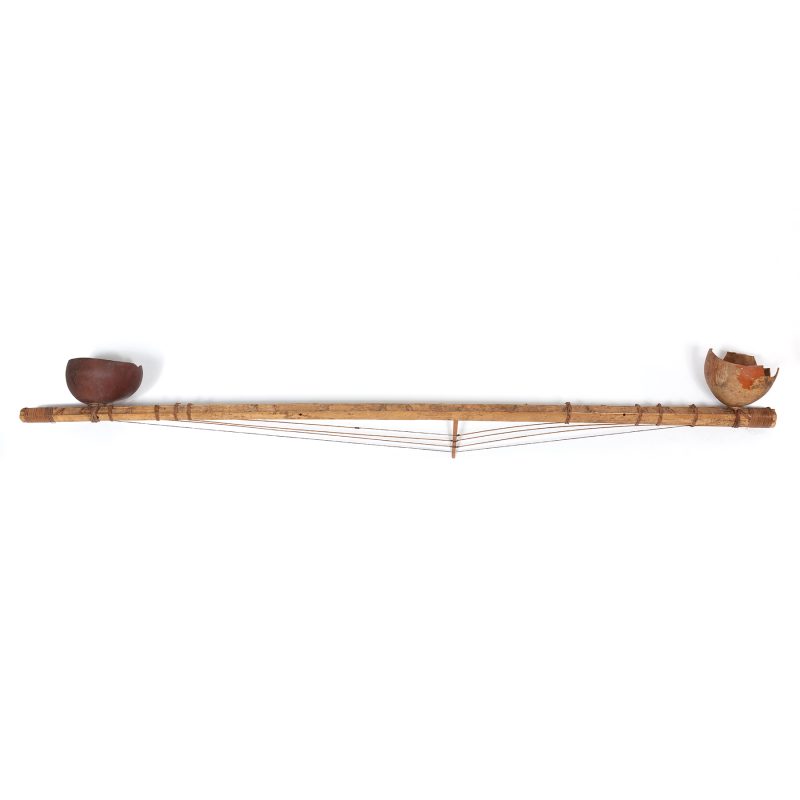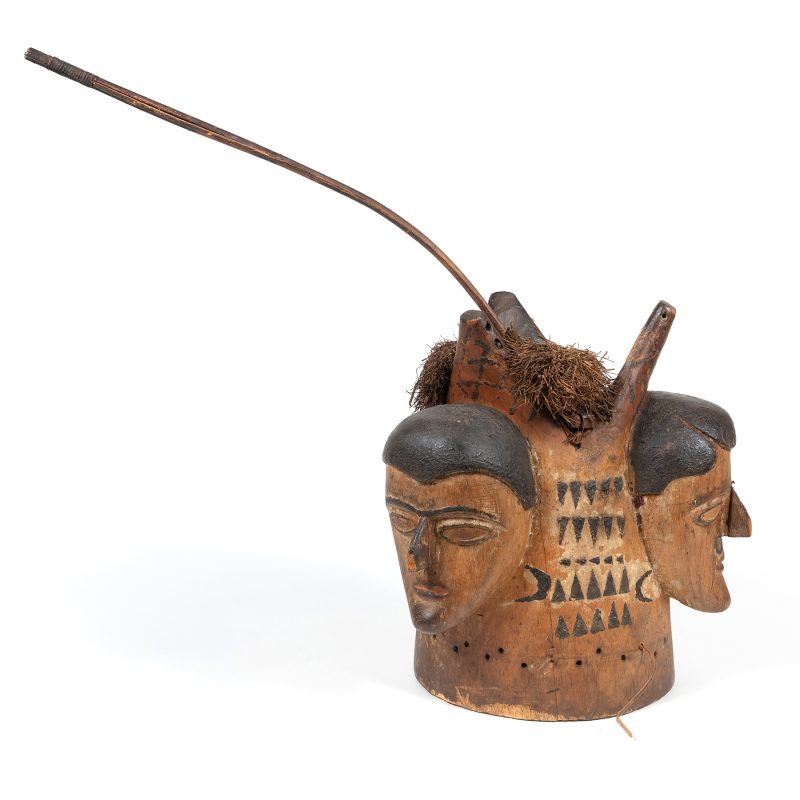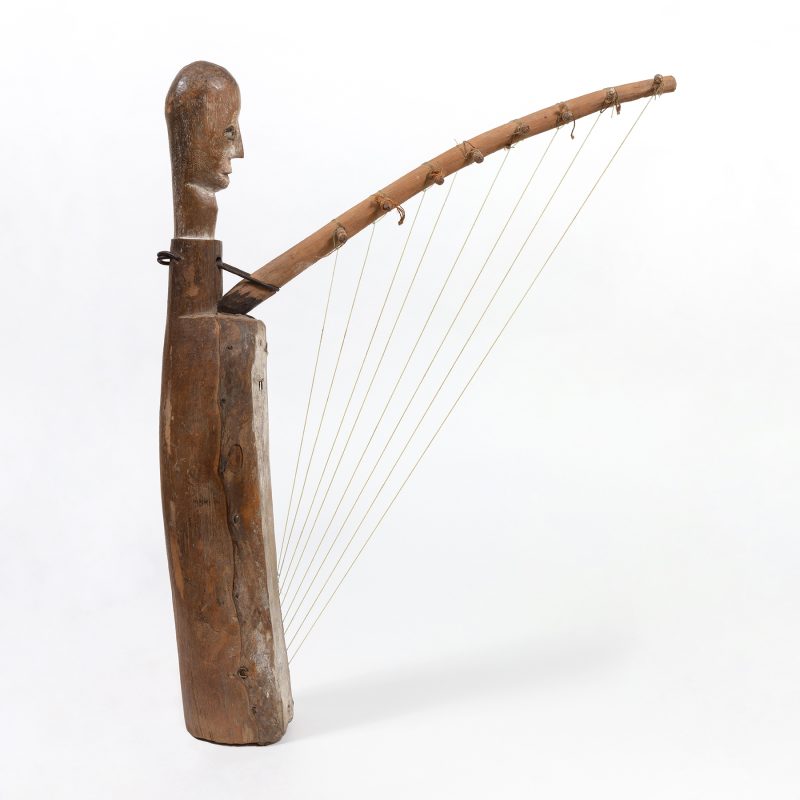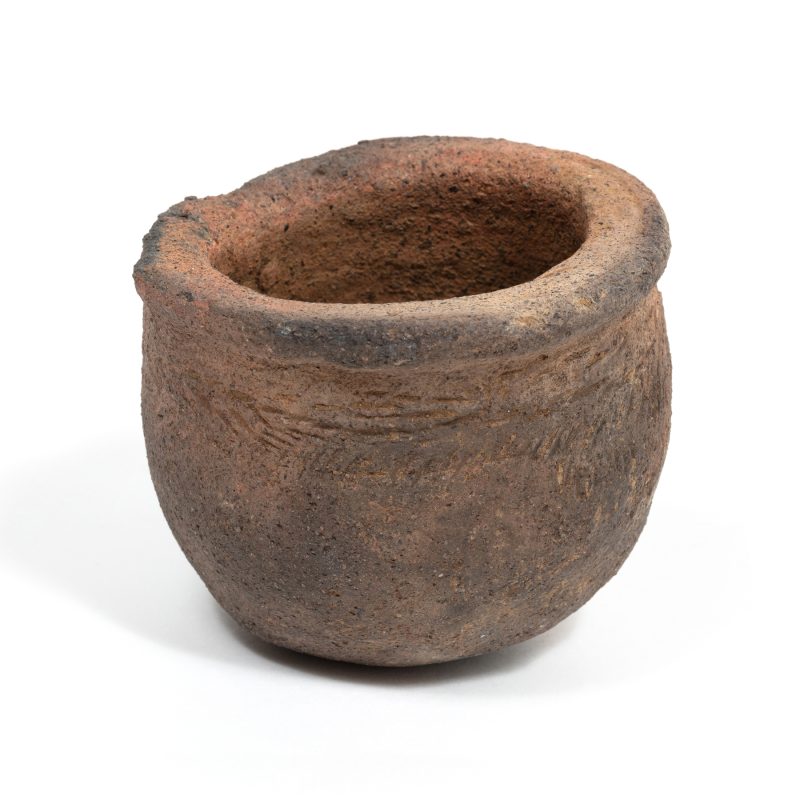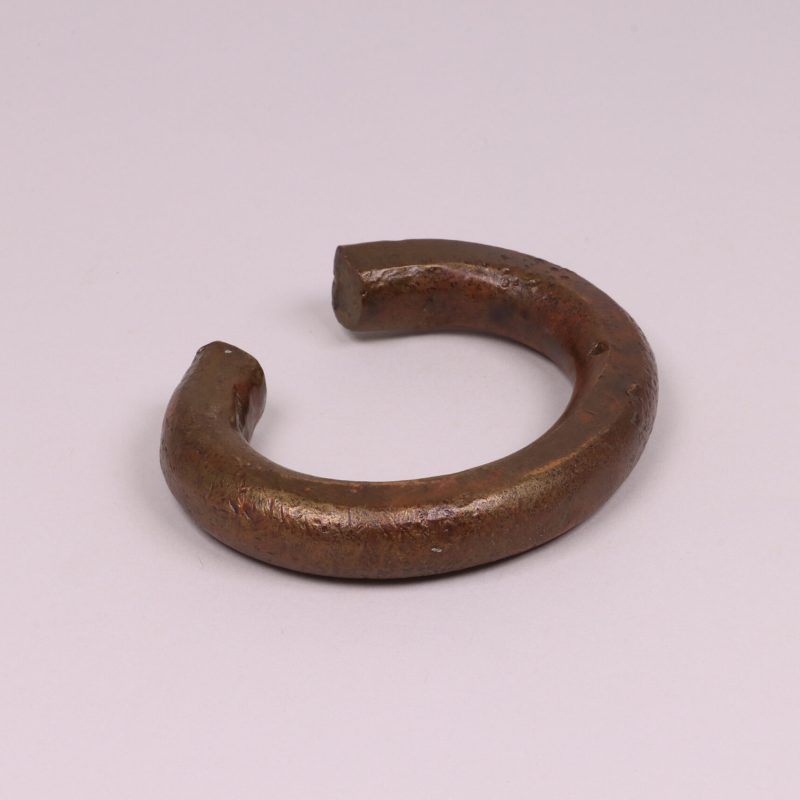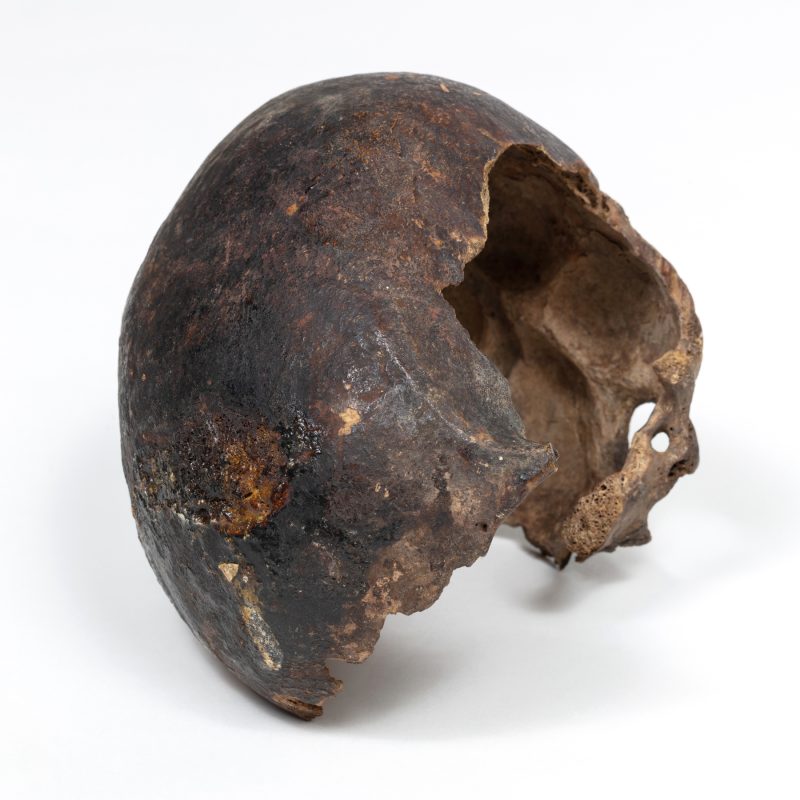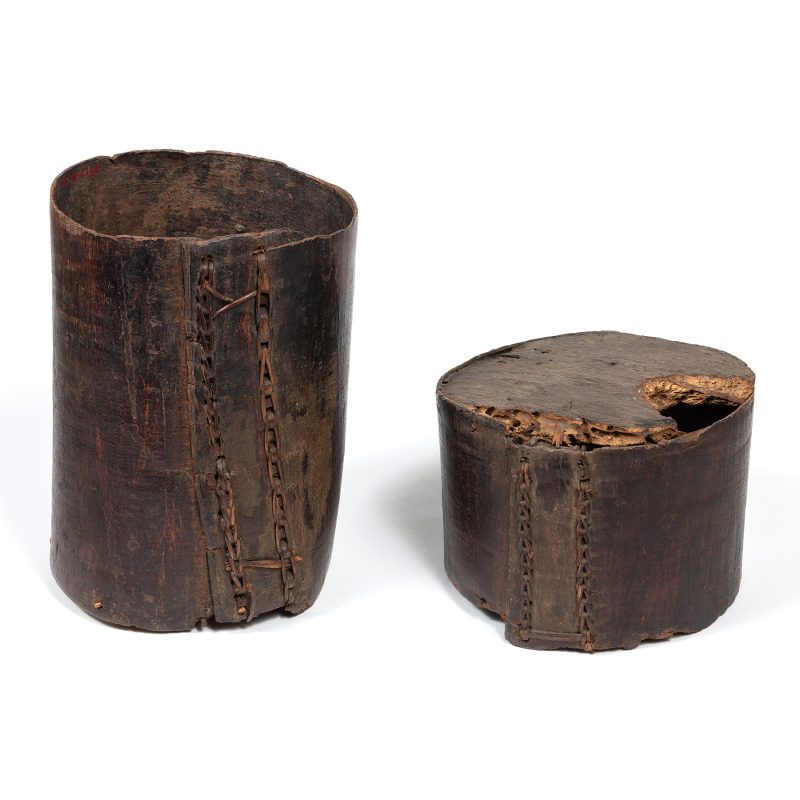Summary of results
This is a portrait of a Fang person in the form of a statuette (mon-e-biang) for ancestor worship, made by the Ntumu carver Ndutumu Singó. The carvings were made to be sold to Western buyers without any ritual use. It was donated to the Ethnology Museum of Barcelona by infantry commander Basilio Olaechea Orruño, second-in-command of the Territorial Guard in Equatorial Guinea, in 1958. It was probably acquired in the village of Konoayap, in the demarcation of Ebebiyín, where Ndutumu Singó lived.
Chronological reconstruction of provenance
This is a portrait of a Fang person in the form of a statuette (mon-e-biang) for ancestor worship, made by the Ntumu carver Ndutumu Singó. The carvings were made to be sold to Western buyers without any ritual use. It was donated to the Ethnology Museum of Barcelona by infantry commander Basilio Olaechea Orruño, second-in-command of the Territorial Guard in Equatorial Guinea, in 1958.
Estimation of provenance
Although it is not specified, it is likely that the object comes from the village of Konoayop, in the Ebebiyín demarcation. According to the information provided by August Panyella: ‘Ndutumu Singó himself […] although he lived in Konoayop—a village in the Ebebiyín demarcation, in the middle of the Ntumu area—he was from the Essatuk clan, of recognized Fang-Fang origin, and according to information gathered by word of mouth, he came from Gabon’ (p. 68). He adds that these Fang-Fang from the Ntumu area are called ‘Ekakuing’, because of the modulation of their voice when speaking, since they start in a high tone and end in a low tone. Although it is not possible to know in what condition Basilio Olaechea acquired this piece, it is very likely that it was purchased. Authors such as Víctor Borrego and Jordi Sabater Pi consider Ndutumu Singó to be the only carver that remained in Equatorial Guinea. Other collectors and researchers who have pieces by this artist include, for example, Íñigo de Aranzadi and James W. Fernandez.
Although there is not much information on this object, we know that August Panyella had commissioned, during the 1948 expedition, a couple of pieces from the same carver, who died in 1958. According to Panyella, with the carving that is the subject of this study, Ndutumu Singó ‘already reflected a portrait in the western sense, that is to say that although it was “almost” an ancestor figure, it did not reflect the spirituality of the souls of another world, but the face of a Fang of our time. It is very interesting to compare the aforementioned figure with the pair of ancestors carved by Ndutumu Singó in 1948, commissioned by me for the Museo de África in Madrid […]. These figures retain in their expression the reflection of ancient art and its expressive means’ (p. 66).
Possible alternative classifications
No alternative classifications are apparent. However, it would be necessary to contextualize the figure of Basilio Olaechea Orruño, in order to specify the circumstances of the acquisition of the piece, obtained through an exchange with a colonial administrator in Equatorial Guinea. It is also recommended that the name of the carver, Ndutumu Singó, be added.
Complementary sources
Bibliography:
Panyella, A. (1959). Esquema de etnología de los fang ntumu de la Guinea Española. Madrid: CSIC.

